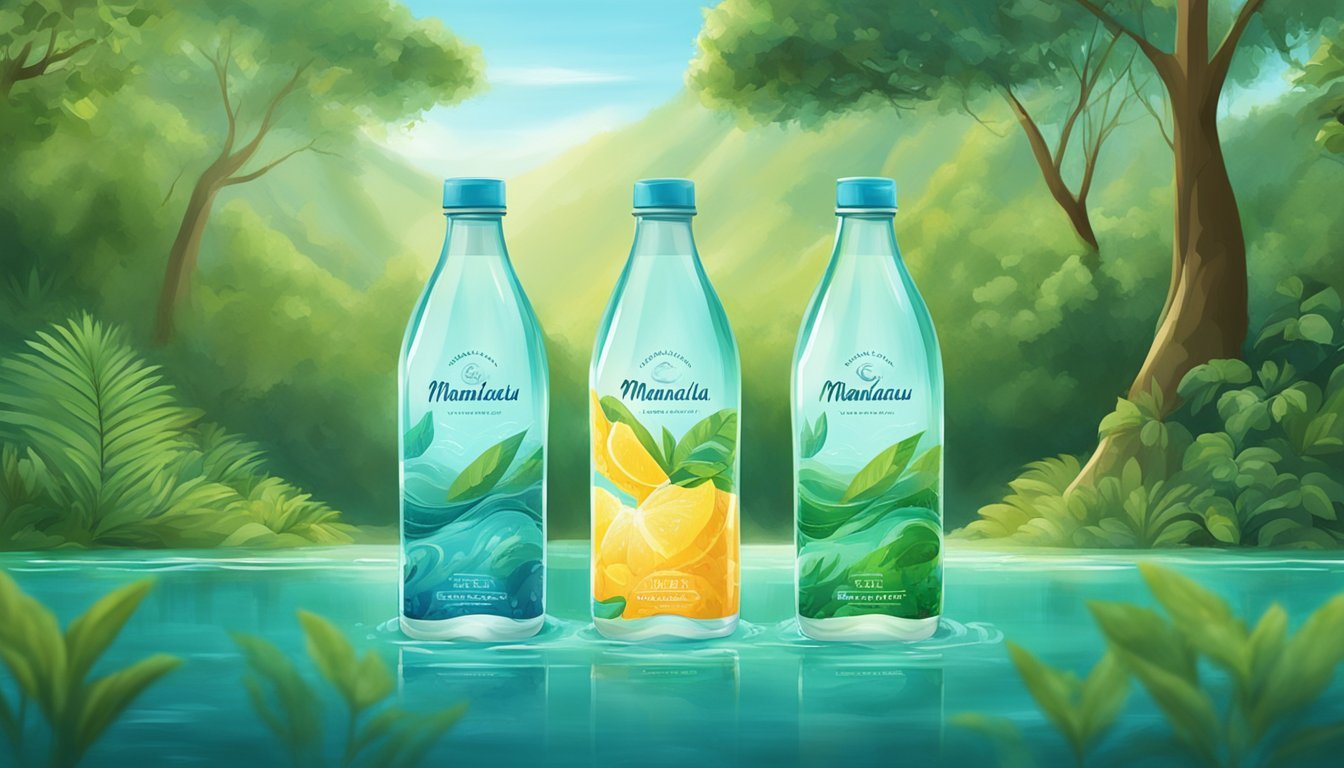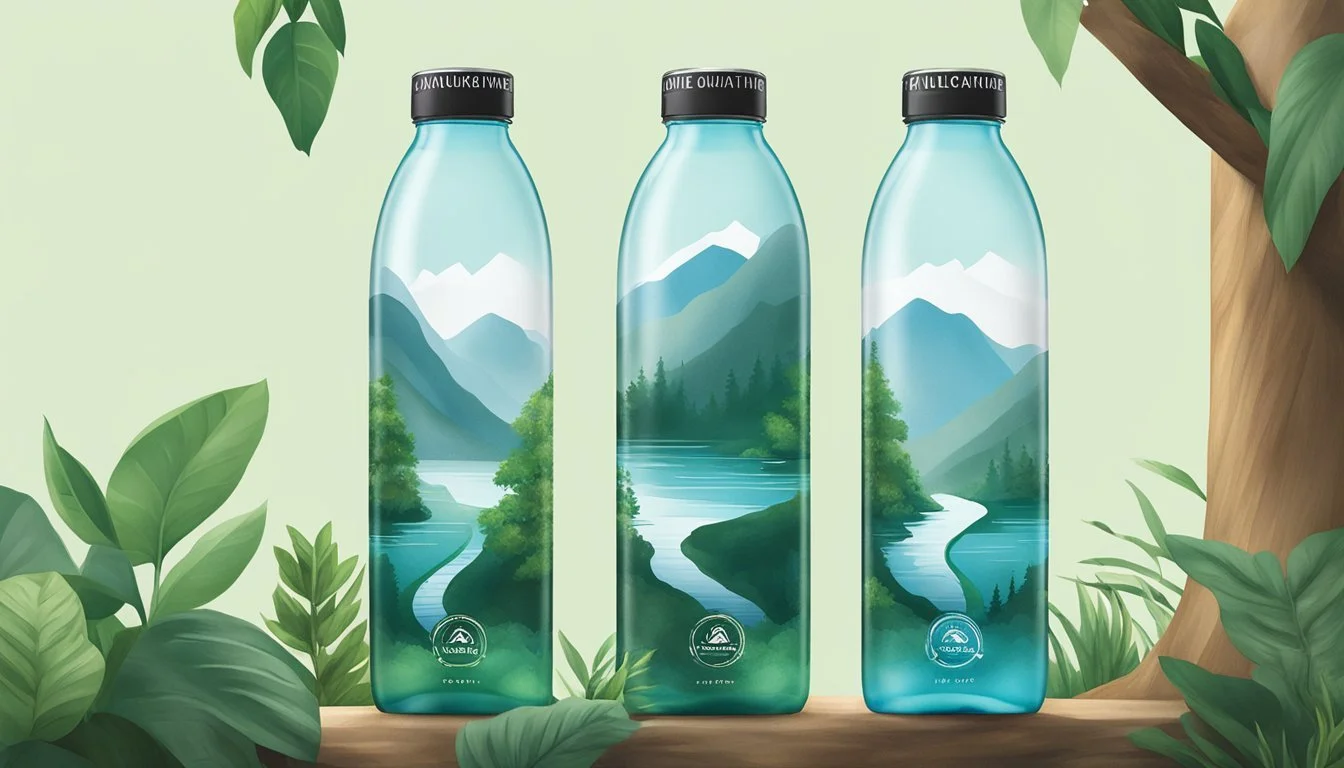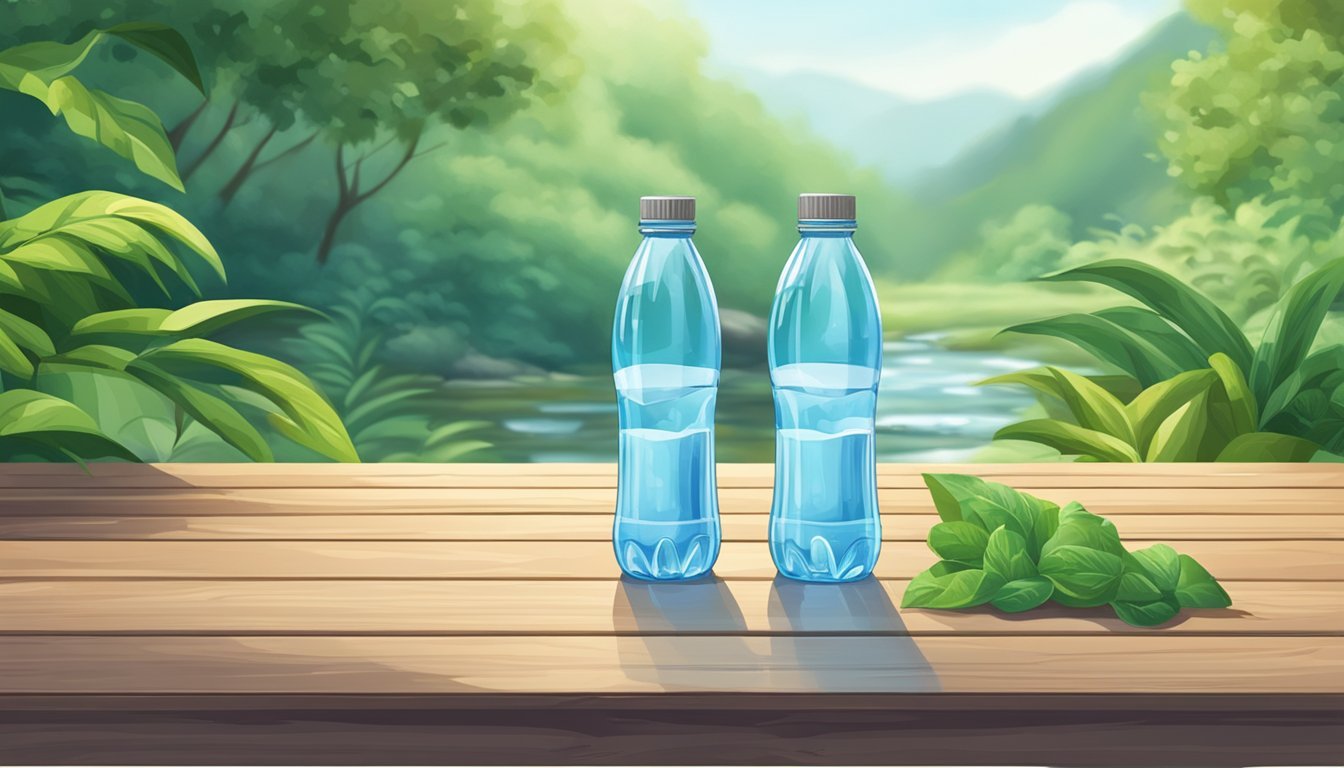Aqua Carpatica vs. Mananalu
Comparing Top Bottled Waters
Choosing the right bottled water can often be a challenging decision for consumers, especially with the wide variety of options available today. When comparing Aqua Carpatica and Mananalu, two standout choices in the market, it becomes clear which offers superior benefits. Mananalu, founded by actor Jason Momoa, pledges to fight plastic pollution by offering purified water in 100% recyclable aluminum cans, aiming at reducing single-use plastic bottles.
Aqua Carpatica, on the other hand, positions itself as a healthy and reasonably priced option, boasting nitrate-free properties and available in both still and sparkling varieties. This makes it an attractive choice for health-conscious individuals looking for purity without a hefty price tag. Ultimately, the better bottled water between Aqua Carpatica and Mananalu will depend on your priorities: environmental sustainability or health benefits.
Both brands have unique selling points that cater to different needs. Mananalu’s mission-driven approach aligns with eco-friendly values, while Aqua Carpatica's emphasis on health and affordability appeals to those focused on personal well-being. By understanding these distinctions, readers can make an informed choice aligned with their personal values and needs.
Understanding Bottled Water
Bottled water comes in various forms, each with distinct characteristics that appeal to different preferences and needs. Key considerations include types of bottled water, their sources, and important quality indicators like Total Dissolved Solids (TDS) and pH balance.
Defining Bottled Water and Its Types
Bottled water can be categorized primarily into still and sparkling varieties. Still water remains non-carbonated and includes spring water and purified water. Sparkling water is carbonated, providing a fizzy experience.
Spring water originates from natural springs and undergoes minimal processing. Purified water, on the other hand, is sourced from any location but goes through extensive filtration processes, ensuring the removal of impurities. The diverse types offer various benefits and cater to different uses, from daily hydration to gastronomic experiences.
The Significance of Source: Spring vs. Purified Water
The source of bottled water is crucial in determining its mineral content and taste. Spring water is naturally occurring and often praised for its minerals such as calcium, magnesium, and potassium, which contribute to its taste and potential health benefits.
Purified water is typically subjected to processes like reverse osmosis or distillation, removing contaminants and making it virtually mineral-free. This results in a cleaner taste but may lack the beneficial minerals found in spring water. The preference between spring and purified water often depends on personal taste and the desired mineral content.
Evaluating Water Quality: TDS and pH Balance
Total Dissolved Solids (TDS) measures the combined content of all inorganic and organic substances in water. A lower TDS means fewer impurities and minerals, while a higher TDS can indicate richer mineral presence but might affect taste. Consumer preference varies, with some preferring lower TDS for a purer taste.
pH balance is another key factor, indicating how acidic or alkaline the water is. Ideal drinking water typically has a neutral pH of around 7.0, though slight variations are normal. Alkaline water with a pH above 7 may offer health benefits, such as better hydration and anti-acidic properties. Evaluating these factors helps consumers make informed choices based on health considerations and taste preferences.
Deconstructing Aqua Carpatica
Aqua Carpatica, sourced from the Carpathian Mountains in Romania, positions itself as a premium, naturally nitrate-free bottled water. This section explores its origins, purity, mineral content, and environmental considerations.
Origins and Source: Carpathian Springs
Aqua Carpatica originates from the pristine Carpathian Mountains in Romania. This region is renowned for its natural springs that provide water with remarkable clarity and purity.
The Carpathian Springs, specifically, are known for their low mineralization and lack of pollutants. The water is naturally filtered through layers of volcanic rock, enhancing its quality.
Harvesting water from these ancient springs ensures a product that is both pure and rich in essential minerals.
The Aqua Carpatica Difference: Purity and Minerals
Aqua Carpatica is celebrated for its purity. The water is naturally nitrate-free, which sets it apart from many competitors. Nitrates, often found in bottled water, can pose health risks, making this an attractive feature.
In terms of mineral content, Aqua Carpatica contains beneficial minerals like calcium and magnesium. These minerals not only contribute to overall health but also improve the water's taste.
The balance of these minerals is carefully maintained, ensuring a refreshing and healthful drinking experience.
Packaging and Environmental Considerations
Aqua Carpatica is conscious of its environmental impact. The water is predominantly offered in recyclable plastic bottles, and efforts are made to minimize the use of non-recyclable materials.
The company emphasizes sustainability by encouraging recycling and responsible consumption. Aqua Carpatica's packaging, designed to reduce plastic waste, aims to align with environmentally friendly practices.
Additionally, the brand is transparent about its efforts in environmental sustainability, providing information on their website (www.aquacarpatica.com) about their initiatives.
Exploring Mananalu and Its Mission
Mananalu, founded by Jason Momoa, aims to eliminate single-use plastics by offering eco-friendly water packaged in aluminum cans. This section dives into the role of Jason Momoa in promoting eco-conscious practices and details the source and quality of Mananalu's water.
The Influence of Jason Momoa and Eco-Consciousness
Jason Momoa, known for his role as Aquaman, has leveraged his celebrity to champion environmental sustainability.
In 2019, he launched Mananalu with the mission to eliminate single-use plastic. The brand focuses on using infinitely recyclable aluminum for its water bottles, promoting a cycle of reuse and reducing ocean plastic pollution.
Momoa's dedication to eco-conscious living is evident in Mananalu's initiatives like the "Drink One, Remove One" campaign. This partnership with rePurpose Global removes a water bottle's worth of plastic from ocean-bound waste for every Mananalu bottle sold. As of now, this effort has resulted in the equivalent of 15 million plastic bottles being removed from the environment.
His advocacy extends to social media platforms, particularly Instagram, where he regularly shares updates and educates his followers on sustainability.
Understanding Mananalu's Source and Quality
Mananalu sources its water from the USA, ensuring it meets high-quality standards.
The water, which comes in 22-ounce aluminum bottles, is purified and packaged to provide optimal hydration without any aftertaste.
Its alkaline nature makes it a healthy option for consumers. The brand emphasizes sustainability not just in packaging but also in their partnership with clean water initiatives.
The choice of aluminum over plastic underscores its commitment to environmental protection. With each can being infinitely recyclable, Mananalu aims to reduce the carbon footprint associated with bottled water consumption, making a significant impact on global waste reduction efforts.
Comparative Analysis
When comparing Aqua Carpatica and Mananalu, key differences emerge in taste, hydration qualities, environmental impact, and market presence. Consumers should consider these factors to make an informed choice.
Taste Profile and Hydration Qualities
Aqua Carpatica offers a crisp, refreshing taste primarily due to its high purity and low nitrate levels. It's available in both still and sparkling varieties, catering to different preferences. The water is known for its balanced mineral content, which aids hydration effectively without leaving an aftertaste.
Mananalu also provides a refreshing taste, drawing from purified sources to maintain cleanliness. The brand focuses on simplicity, delivering purified water in recyclable aluminum cans. The hydration quality is competitive, though it lacks the distinct mineral profile of Aqua Carpatica, which might influence preference in taste tests and aftertaste evaluations.
Packaging Impact on Environment
Aqua Carpatica uses recyclable plastic and glass bottles, aiming to reduce its carbon footprint. Despite this effort, single-use plastics still pose a challenge due to recycling limitations and environmental impact. On the other hand, its glass bottle option is more sustainable but less convenient for consumers on the go.
Mananalu stands out with its infinitely recyclable aluminum cans, designed to combat single-use plastic pollution. This choice positions Mananalu as a sustainable alternative, aligning with its mission to protect the oceans and planet. This commitment is further highlighted by initiatives like Drink One, Remove One, aiming to remove plastic waste for each can sold.
Market Presence and Accessibility
Aqua Carpatica is priced competitively, with 500ml bottles ranging from 65p for still to 69p for sparkling water. It’s accessible in various retail locations but may not have widespread availability in all regions. Its reputation for purity helps maintain consumer trust and demand.
Mananalu, backed by Jason Momoa, leverages its celebrity endorsement to gain traction. The brand is available on platforms like Amazon and offers partnerships with airlines such as Hawaiian Airlines, enhancing its visibility. Free shipping options further boost its accessibility. Despite this, it might be slightly more challenging to find compared to more established brands.
Sustainability and Environmental Responsibility
Sustainability and environmental responsibility are increasingly critical factors influencing consumer choices. The impact of bottles on the environment and corporate social responsibility initiatives highlight these considerations.
Impact of Bottles on the Environment
Traditional single-use plastic bottles significantly contribute to pollution, particularly in the oceans. These plastics break down into microplastics, harming marine life and ecosystems.
Mananalu addresses this issue by offering purified water in 100% recyclable aluminum bottles. Aluminum is an infinitely recyclable material, reducing the necessity for new raw materials and decreasing the overall environmental impact.
Aqua Carpatica, on the other hand, uses PET plastic bottles. While PET is recyclable, it is less efficient compared to aluminum. Many plastic bottles end up in landfills or as ocean-bound waste, further exacerbating pollution problems.
Emphasizing aluminum over plastic may thus provide a more sustainable solution to the environmental challenges posed by bottled water.
Corporate Social Responsibility and Initiatives
Mananalu, founded by actor Jason Momoa, aims to eliminate single-use plastics through its “Drink One, Remove One” initiative. This program promises to remove one plastic bottle from the environment for every bottle of Mananalu sold, making a direct contribution to addressing pollution.
Their collaboration with Repurpose Global further exemplifies their commitment to sustainability. This partnership focuses on reducing ocean-bound waste and supporting global recycling efforts.
Aqua Carpatica also engages in Corporate Social Responsibility (CSR) initiatives, but details on specific projects and partnerships are less prominent. Their efforts generally revolve around promoting pure and natural mineral water from the Carpathian Mountains, without extensive emphasis on broader environmental impacts.
Comparatively, Mananalu’s focused initiatives and strategic partnerships underscore a stronger commitment to environmental responsibility and effective waste reduction.
Consumer Considerations
When choosing between Aqua Carpatica and Mananalu bottled water, consumers often evaluate health benefits, economic factors, and packaging convenience. Each brand offers unique attributes that may influence purchasing decisions.
Health and Wellness Benefits
Aqua Carpatica is celebrated for its naturally balanced pH level, rich in essential minerals like calcium and magnesium. These electrolytes aid in hydration and overall wellness, appealing to health-conscious individuals.
Mananalu, driven by an environmental mission, provides purified water in 100 percent recyclable aluminum cans. Although it may not have the same mineral benefits as Aqua Carpatica, it offers clean hydration. Both options support active lifestyles, but Aqua Carpatica’s natural mineral composition might offer additional health benefits.
Economic Factors: Cost and Value Comparisons
Aqua Carpatica typically offers a range of pricing based on bottle sizes and types (still or sparkling). Its cost might be higher due to the natural sourcing and mineral-rich content, providing added value for those seeking specific health benefits.
Mananalu's pricing aligns with premium purified water brands. The use of aluminum cans for single-use packaging may add to the cost compared to typical plastic bottles. However, the environmental value of reducing plastic waste appeals to eco-conscious shoppers. Price-wise, there might be a slight premium on both, driven by their unique selling points.
Packaging and Convenience
Mananalu stands out with its commitment to eliminating single-use plastic water bottles by using recyclable aluminum cans. These cans are lightweight, often with resealable options, making them convenient for transportation and active use. The brand also occasionally releases limited-edition designs, such as the "Aquaman" themed bottles, adding a collectible aspect.
Aqua Carpatica often comes in traditional plastic bottles, though there are refillable options available. The serving size varies, accommodating different needs from individual hydration to larger sharing sizes. The convenience of easily available plastic bottles may appeal to some consumers despite the environmental implications.
Each brand demonstrates a commitment to consumer needs through different packaging styles, with Mananalu leading in sustainability initiatives while Aqua Carpatica focuses on traditional, mineral-rich choices.






